Honda CR-V: Cruise Control
Component Location Index
- CRUISE MAIN INDICATOR
- CRUISE CONTROL INDICATOR
- CRUISE CONTROL COMBINATION SWITCH
- BRAKE PEDAL POSITION SWITCH
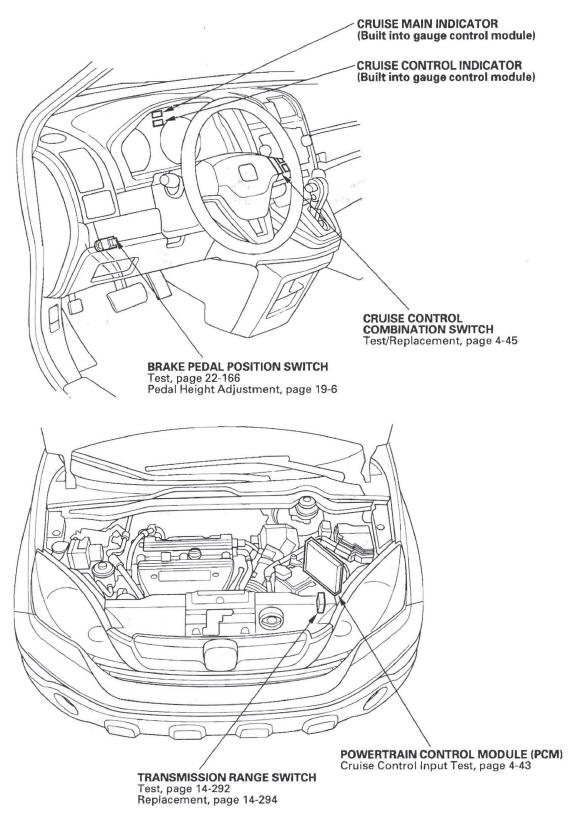
-
POWERTRAIN CONTROL MODULE (PCM)
-
TRANSMISSION RANGE SWITCH
Symptom Troubleshooting Index
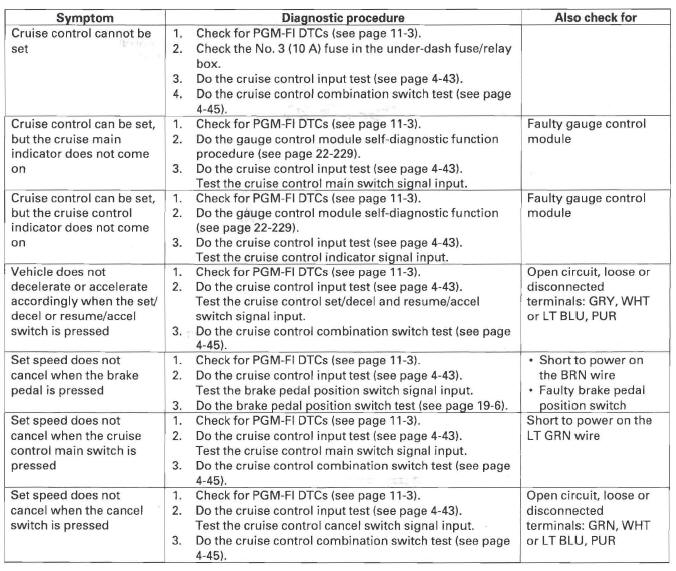
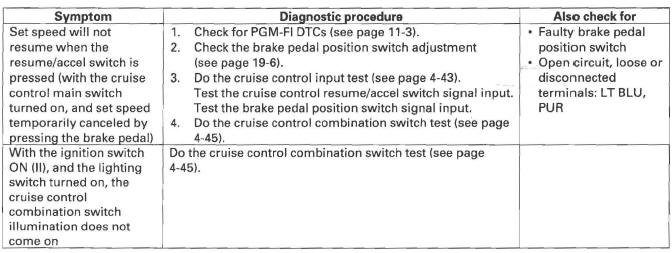
Circuit Diagram
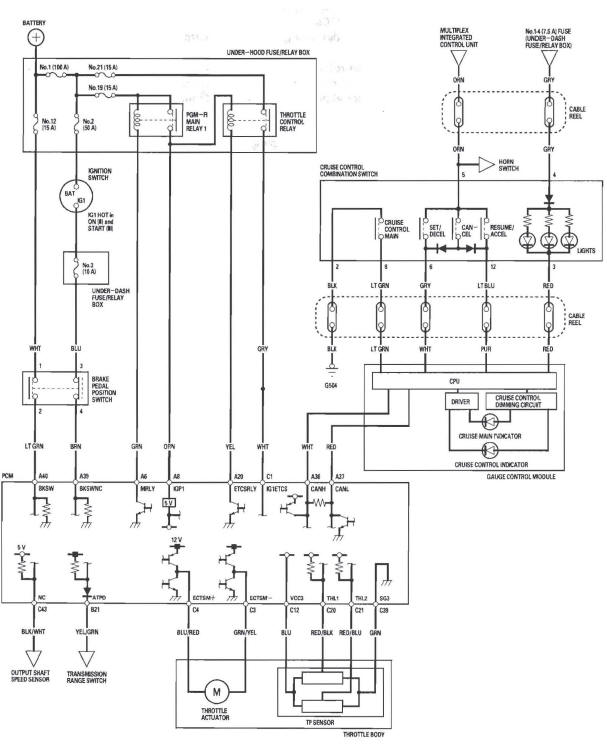
Cruise Control Input Test
1. Connect the Honda Diagnostic System (HDS) to the data link connector (DLC) (see step 2).
2. Turn the ignition switch ON (II).
3. Make sure the HDS communicates with the vehicle and the powertrain control module (PCM). If it doesn't, troubleshoot the DLC circuit.
4. Go to PGM-FI, and check for DTCs.
5. Do the following tests while monitoring parameters in the PGM-FI DATA LIST with the HDS.
NOTE: Intermittent failures are often caused by loose circuit connections. While monitoring cruise control inputs, flex their circuits, and note if any of the test results change.
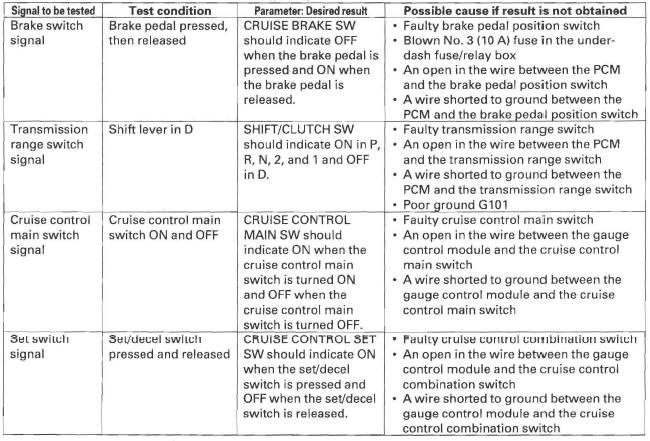
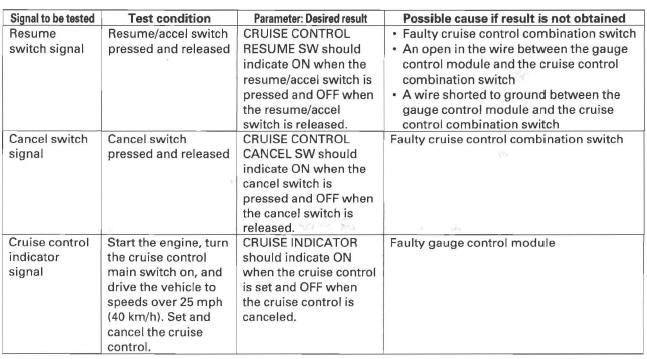
Cruise Control Combination Switch Test/Replacement
SRS components are located in this area. Review the SRS component locations and the precautions and procedures before doing repairs or service.
1. Remove the steering wheel.
2. Remove the screws (A). Disconnect the 12P connector (B), then remove the cruise control combination switch.
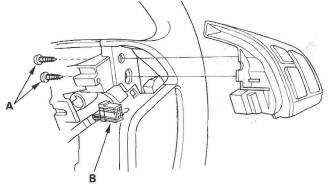
3. Check for continuity between the terminals in each switch position according to the table.
- If there is continuity, and it matches the table, but switch failure occurred on the cruise control input test, check and repair the wire harness on the switch circuit.
- If there is no continuity in one or more positions, replace the switch.
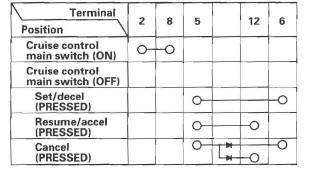
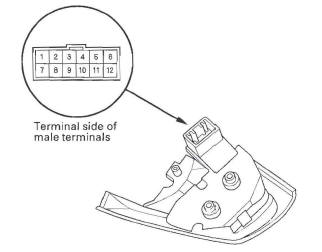
4. Check for continuity between the terminals in according to the table.
- If there is continuity, and it matches the table, check and repair the wire harness on the switch circuit.
- If there is no continuity in one or more positions, replace the switch.

Engine Electrical
Special Tools

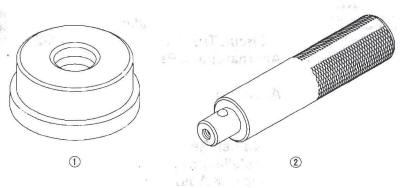
-
Attachment, 42 x 47 mm
-
Driver

